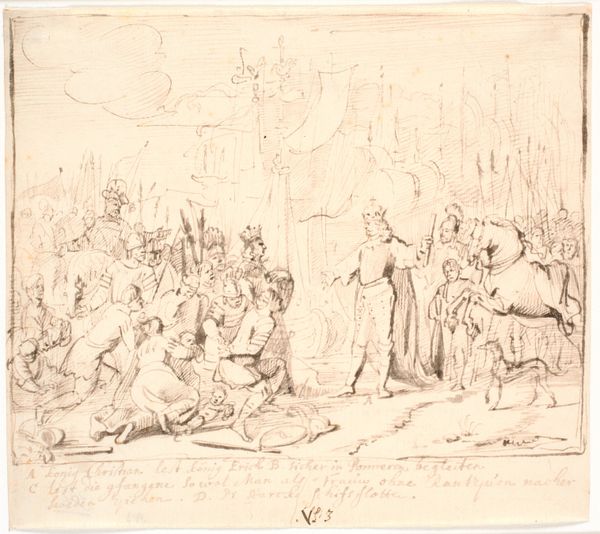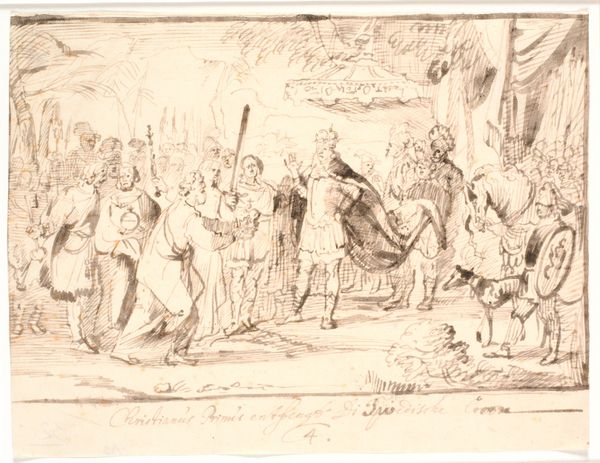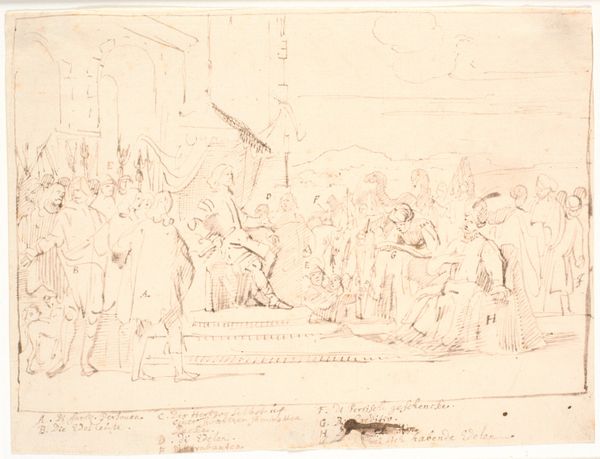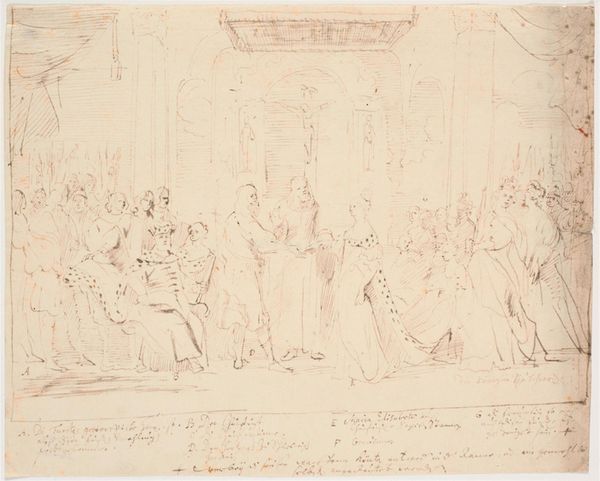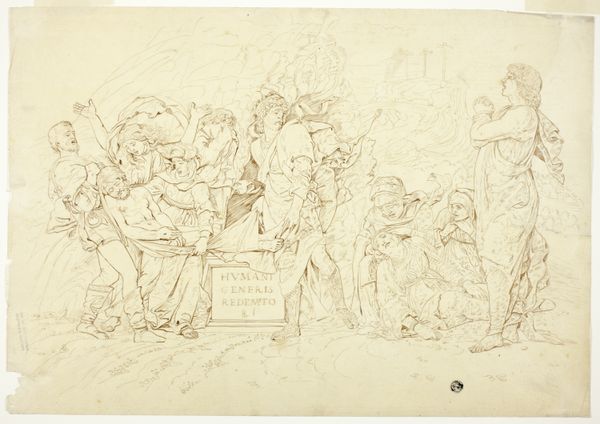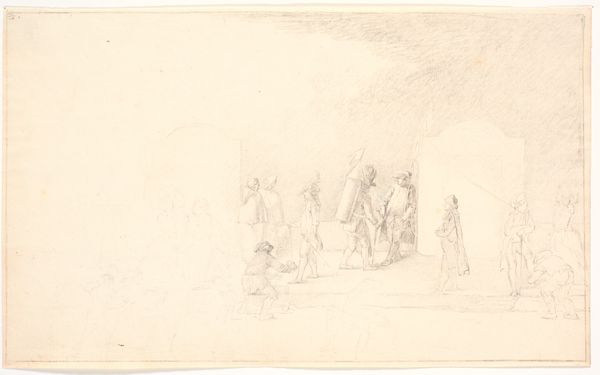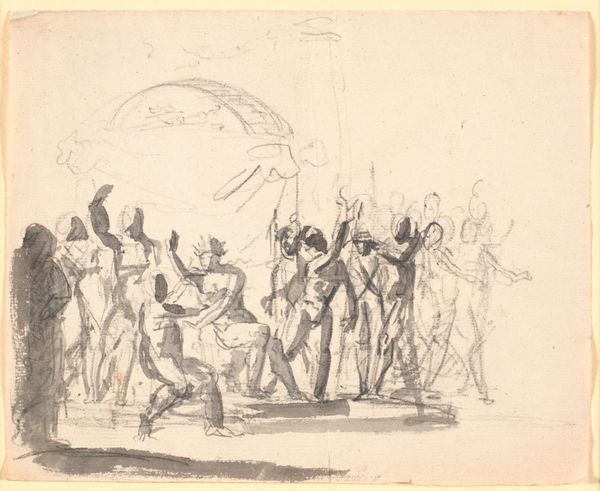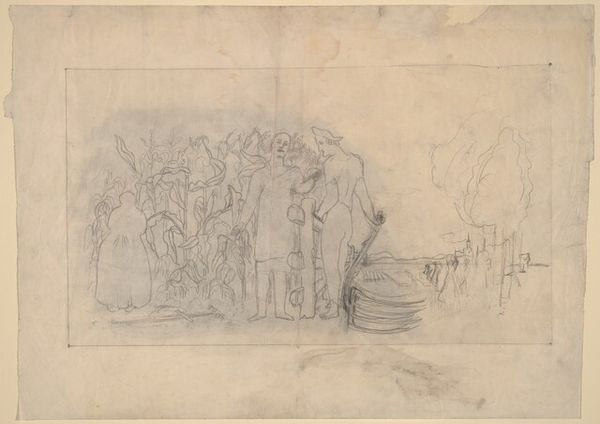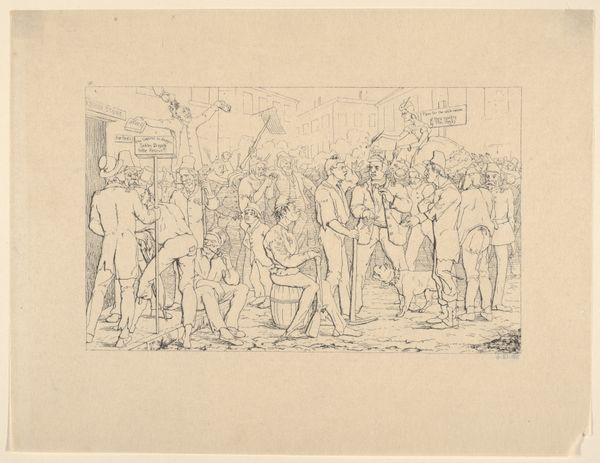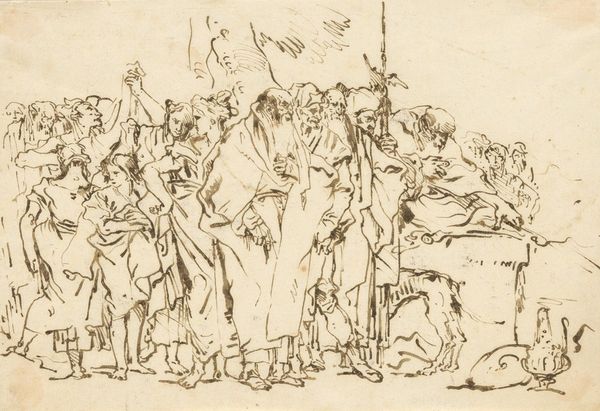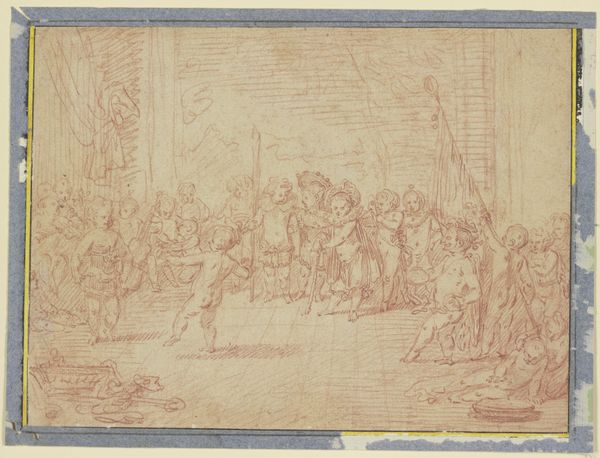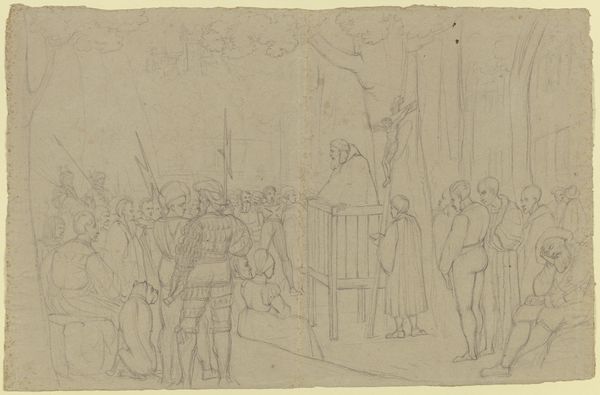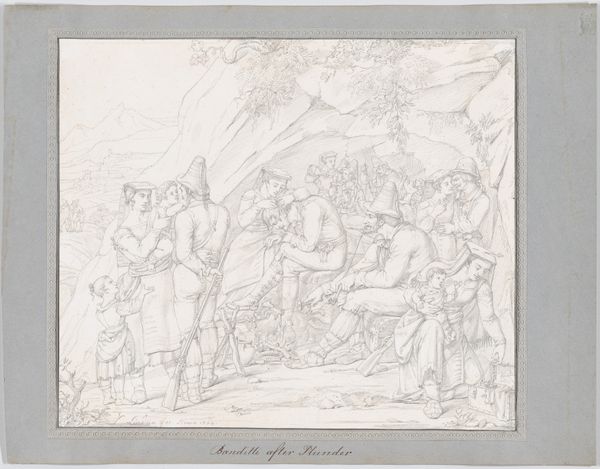
drawing, ink
#
drawing
#
ink drawing
#
baroque
#
etching
#
figuration
#
ink
#
history-painting
Dimensions: 205 mm (height) x 240 mm (width) (bladmaal)
Curator: This etching by Jürgen Ovens, created sometime between 1623 and 1678, depicts "Hans krones til konge af Danmark, 6. juni 1469," or Hans being crowned King of Denmark on June 6, 1469. It's currently held in the collection of the SMK, the National Gallery of Denmark. Editor: Immediately striking is the somewhat frantic energy of the linework, wouldn’t you agree? There’s a sense of almost feverish movement across the whole composition, despite its historical subject matter. Curator: Indeed. The sketch-like quality, rendered in ink, conveys a dynamic scene. Ovens utilizes line weight variations quite effectively, drawing the eye toward key figures like King Hans, situated centrally, as the crown is presented. Note the intricate detail given to the royal garments and the contrasting simplicity used to depict the assembled crowd. Editor: I find it interesting how this seemingly straightforward historical record is steeped in Baroque theatricality. Look at the way Ovens stages the coronation like a play, complete with an implied audience spilling out beyond the edges of the "stage". It transforms a specific event into a performance of power and legitimacy, particularly for viewers who are experiencing the artwork outside of the precise moment of coronation. Curator: The historical context is essential here. While rendered later, Ovens invokes the ceremonial importance of this moment for Danish royalty. By concentrating on figuration and the gestures of those present, he illustrates the transfer of power itself. It speaks to structural hierarchies as well as individual ambition. Note how compositional balance suggests power consolidating from right to center and finally down onto the figure of Hans, unifying social structure. Editor: It certainly presents the power of that historic, specific moment but it does feel mediated by seventeenth century concerns. After all, it's less about objectively recording what occurred and more about shaping how such events are understood within an ongoing narrative of kingship. Consider where this work might be found and consumed, and what values were being propagated at the time it was created. Curator: Absolutely, it's not a passive record. By investigating line quality, form, and composition, it is also possible to glean so much regarding underlying structures in place to preserve ideas of both hierarchy and divine right. Editor: A fruitful discussion, revealing how technique and context intertwine, even within a seemingly straightforward depiction of a historical coronation.
Comments
No comments
Be the first to comment and join the conversation on the ultimate creative platform.
